Got a new bird and excited to share your personal space with your new pet? Congrats, however; we understand that you must be worried about choosing the right type and size of birdcage for your new friend. Birds are regarded as unique flying machines, blessed with mighty wings, a large, strong heart and the gift of feathers.
One unique feature of birds is the ability to use songs, trills and whistles to locate other birds during mating season. They are highly adaptive in terms of climate change and preserving their species, with well-developed flight muscles that aid them during their high flights. These warm-blooded species are peaceful, friendly, wise, logical and bold.
According to the American Pet Products Association, over 5.7 million Americans prefer to keep birds as domestic pets. However, birds require a safe and comfortable space to thrive. They require low maintenance compared to dogs and cats but need utmost care and attention from their owner. Remember that several types and sizes of birdcages are available in the market. However, there are specific standards that you must keep in mind to ensure the comfort and safety of your beloved pet.
Read More: Exploring Unusual Bird Behaviour: Top Ten Popular Birds to Keep as Pets
Are you hunting for the right birdcage? Not sure about the right dimensions and material? Worried about its maintenance and choosing the right type? Don’t worry; we have got your back. In this article, we have compiled all the information on choosing the right birdcage and how to build up your own birdcage in the comfort of your home.
Buying a birdcage
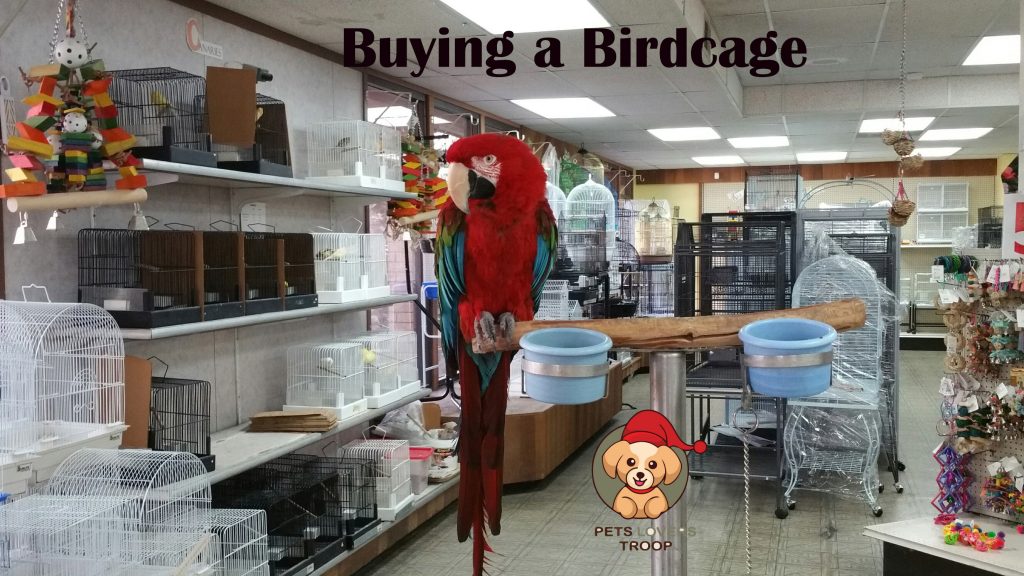
You must be worried about where to buy birdcages and how to choose the best one for your pet. Different types and sizes of birdcages are available in the market. However, you must bear in mind the breed of your bird, so they have ample space to fly and move in the cage. You can buy good quality birdcages from several places, including
Pet stories- They have a wide range of cages and accessories, as per your needs and requirements.
Online retailers- Amazon and Chewy also have a large selection of cages to choose from.
Bird specialty stores- These stores are pretty handy, as they have trained staff to offer advice and recommendations.
Second-hand stores- These thrift stores or consignment shops are a cheap and affordable stop, if you are tight on budget.
Manufacturer’s website– You can buy high-quality birdcages directly from a reputable seller.
How much do birdcages cost?
The cost of the birdcage largely depends on its overall size, dimensions and material. On average, a birdcage can cost somewhere between $50 to $500. A small birdcage can cost around 50 to $100, while a larger cage can cost about $300 to $500 or more. While selecting the birdcage, remember that your bird’s safety should be your number one priority. Larger cages can be expensive, but they are made of durable material such as metal or wrought iron that can be a safer option for your birds than plastic birdcages.
Choosing the right birdcage
Choosing the right birdcage can be a tricky decision to make. However, there are several factors that you need to take into consideration while making your final call.
The right size- Pick up a birdcage that is spacious enough to accommodate your birds, so they can fly and spread their wings. It will also help you to maintain overall hygiene because tight cages are difficult to manage.
Choose the right material- For the best birdcage selection, you must choose durable materials, such as glass, metal or wrought-iron. Each material has its own set of pros and cons. However, choose the one that fits your requirements.
Bar spacing- Make sure that the bar spacing is appropriate so your birds cannot escape the cage or get their heads stuck between the bars.
Durability- This is a crucial factor to consider. A sturdy and well-constructed birdcage can help avoid injuries and prevent escape.
Accessibility- Buy a cage with easy-to-open doors to replace food and water pots without hassle. For the best birdcage selection, you need to ensure that it is safe and secure for your pets and does not have sharp edges or loosened bolts.
Read reviews and check the pricing- Do read the reviews by other bird owners and compare its pricing with other competitor websites. Buy a cage that suits your needs and is not heavy on your pocket.
Points to remember to set up a birdcage
Setting up a birdcage involves various steps, which are as follows:
Pick up the right location: Place your birdcage in a room that is not extremely hot or cold and is away from direct natural light
Assemble the cage tactfully: Follow the instructions to set up your birdcage. Make sure that all parts are securely fastened, and there is no unattended screw, as it can hurt your bird.
Remember to add a cage liner: Cage liners are essential to avoid a mess on the bottom of your cage. It makes cleaning easier and absorbs extra food or water droppings. You can either use a newspaper or a paper towel as a cage liner.
Install perches: Perches are essential for the birds. Try to place different diameters and textures in the cage.
Place toys and accessories: Do add toys, ladders, swings and other accessories in the birdcage, as they keep the birds engaged and mentally stimulated.
Fill the food and water pots: Place food and water pots in the birdcage and replace them daily.
Clean regularly: Maintaining hygiene is essential to prevent bacteria and other build-ups in the cage.
Read More: Setting up a birdcage- Step-by-step guide
Types of birdcages
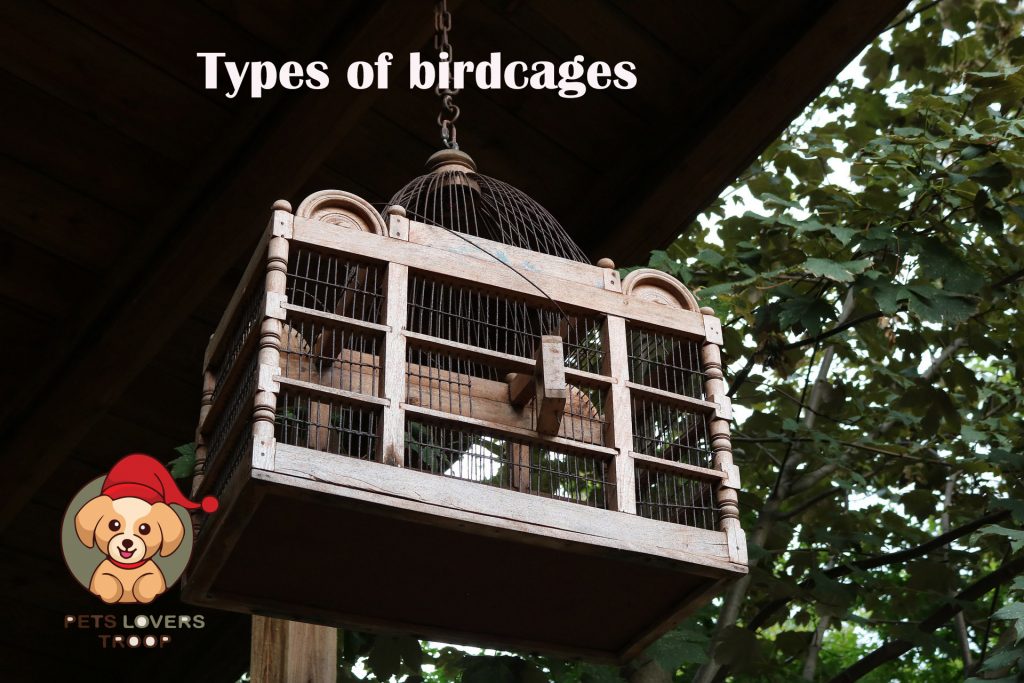
Several types of birdcages are available in the market, each with its own benefits and features. Some common types include:
Metal birdcage- durable and easy to clean
Wrought iron birdcage- durable and made of decorative designs
Glass birdcage- great for displaying birds, but fragile and challenging to clean
Plastic birdcage- light in weight and easy to clean, but not durable as metal cages
Aviary birdcage- outdoor cage designed to keep multiple birds in one spot, have a larger space
Travel birdcage- used to transport birds, typically made of metal to prevent escaping
Dome top birdcage- round top with an extra height for birds to fly
How to build your own birdcage?

Building your own birdcage can be a fun project; however, ensure that the cage is safe and secure for your birds. To build your own birdcage:
Choose the right material, such as wood, screws and mesh. You can easily find these materials in a hardware or home improvement store.
- Pick up a size based on the breed of your bird. Make sure the birds have ample space to fly, rest, and spread their wings.
- Draw a detailed plan to build your cage, along with a list of required materials and measurements. This will help you to stay on track.
- Now cut the wood to make a frame for your cage, with the help of a saw. Make sure all the pieces are of the right size.
- Now assemble the pieces with the help of screws and wood glow. Make sure that the parts are square and level.
- Now attach the wire mesh to the frame to make it secure. Pay special attention that there are no sharp edges.
- Now add doors, food and water pots and perches. Ensure the accessories are placed in the right spot to make them accessible for your birds. End the project, by painting the wood to make it look nice and appealing.
- Conduct a safety check before placing your birds in the cage. Ensure that all the parts are tightened, and there are no sharp edges or corners.
- If you are not confident about building your own birdcage, feel free to reach out to a professional for consultation or get a pre-made birdcage from the store.
Birdcage for Parrots

Large cages are convenient for birds, as they have ample space. A birdcage for parrots should have the following features:
- A size of at least 24 inches wide and deep, with a height of 36 inches. Parrots are active birds and require ample space to move around and fly.
- A bar spacing of no more than 1 inch apart. Parrots are intelligent birds and can easily find a way out of cages.
- The bars should be 5/16 inches in diameter, as strong birds can easily bend thin bars to escape.
- The cage should be made of stainless steel or wrought iron, as they can easily chew through weak materials.
- The cage doors should be secure and easy to open and close for feeding and cleaning purposes.
- It should have several perches made of sturdy textures and materials to rest on, as parrots have healthy and strong feet.
- Place plenty of toys and accessories, as parrots like to be entertained and stimulated.
Birdcage for Canaries

Canaries are small birds, with vibrant feathers. A birdcage for canaries should have the following features:
Its size should be at least 18 inches wide and deep. Larger cages are better, providing them more space to roam, fly and stretch.
- The bars should be at least 3/16 inches in diameter, to prevent breaking and bending.
- The materials should either be steel or wrought iron. Canaries are not strong birds like parrots, but make sure that the cage is sturdy.
- The doors or the cage should be secure to prevent escape. Ensure that the doors are placed in the right spot, so they are easy to open for feeding and cleaning purposes.
- Place at least one perch in the cage made of natural wood.
- Canaries need plenty of light to stay healthy and happy. Place their birdcage near a window or in a well-lit room.
Birdcage safety
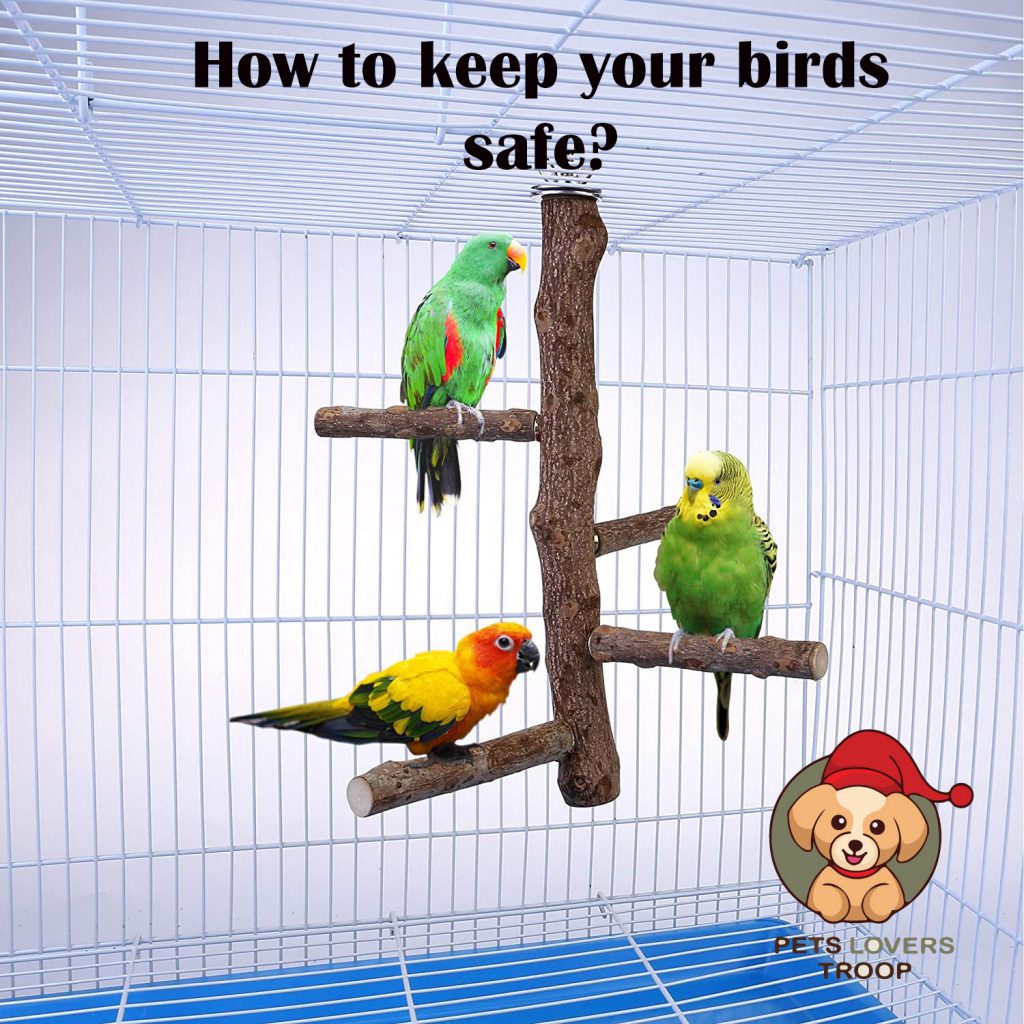
The safety of your bird should always be your number one priority. Here are some tips to ensure that the cage is safe and secure for your birds:
Ensure that the cage size is appropriate for your bird, so they easily fly, stretch their wings and move around the cage comfortably.
- Check if the cage has sharp edges or corners, particularly around the locks and door hinges. Place protective caps over them, if needed.
- Ensure that the doors are tight and secure to prevent injuries or chances of escape.
- Use perches made of natural and safe materials, such as wood, ropes or cement, to avoid injuries to your birds’ feet.
- Avoid using materials that can be toxic or harmful to your birds, such as certain types of wood or cleaning products.
- Clean the birdcage regularly to avoid parasites and the build-up of bacteria.
- Do not overcrowd the cage with bird accessories, as it can lead to stress and aggression among them.
- Keep your birdcage out of reach of other pets in your house, such as cats and dogs, to prevent them from injuring your birds.
- Place the cage away from direct sunlight or any other sources of loud noises.
- Regularly inspect your birdcage to check for any signs of damage. Repair or replace the broken parts if need be.
Birdcage accessories
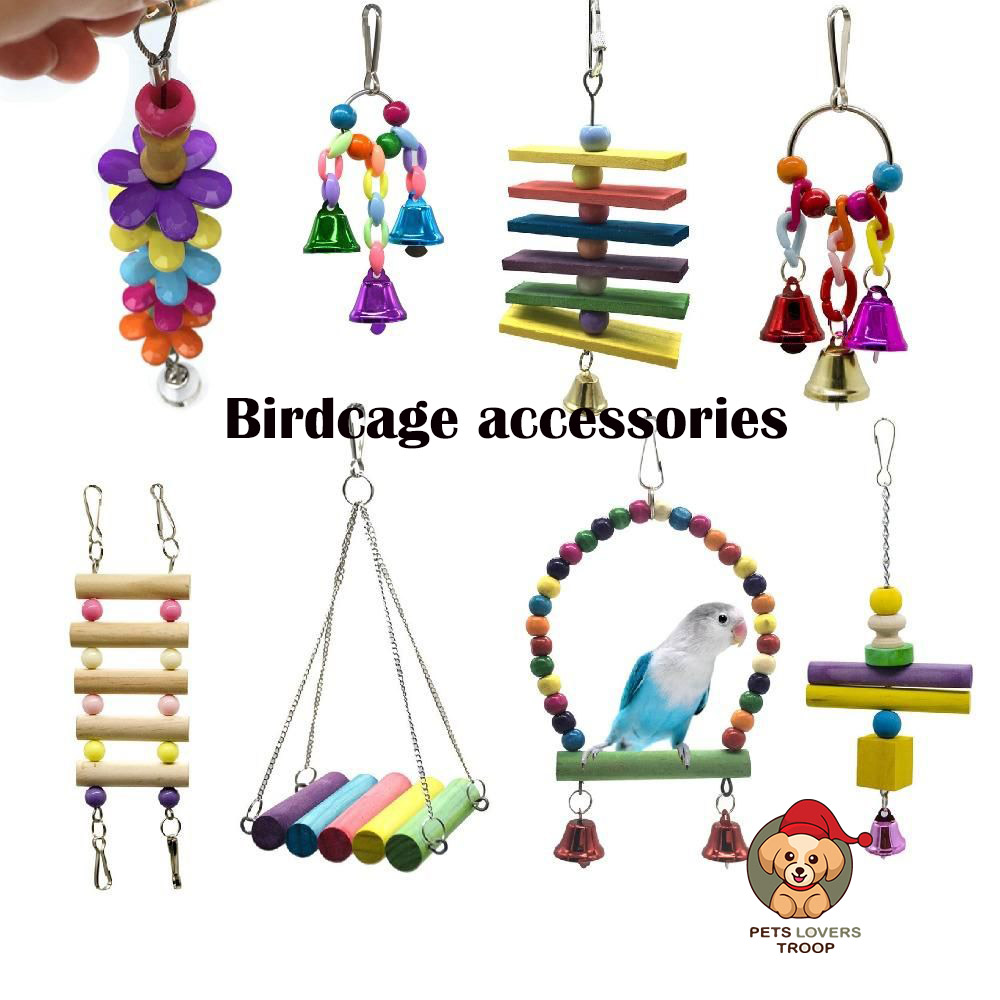
Bird accessories can be an excellent add-on to make your bird’s living space more enjoyable and comfortable. These include:
Perches- Made of wood or other safe materials such as rope or cement
Food and water dishes- these are for food and water, made of material that are easy to clean and refill
Toys- swings, chew toys, ladders
Mirrors- these are for entertainment and visual stimulation
Nest boxes- a box or a cozy place for your birds to sleep
Playgyms- ladders, swings and perches
Lighting- UVB light or heat lamps
Training aids- perch covers or bird harnesses
Feeders- tube feeders, hopper feeders, and window feeders.
Read more: Behavioral training for birds
How to maintain hygiene in a birdcage?
Maintaining the hygiene of your bird’s cage is vital to ensure its health and well-being. Here are some tips to keep the birdcage neat and clean:
- Use a disinfectant to clean the cage, accessories and perches. Leave the disinfectant for at least 15 minutes and brush the entire area. You can also use white vinegar and water to wipe down or scrub the bars and perches. Thoroughly wash all the chemical residue with fresh water, before leaving your bird in the cage. Do not place your birds in a damp cage.
- Dirt and waste can accumulate in the perches, resulting in bacteria and parasites. Try to soak and scrub the perches at least once a week to remove germs. Remember that wooden perches take some time to dry after cleaning, so keep a few extra perches.
- Wood and bamboo are impossible to clean and sterilize; hence, dirt and bacteria can easily penetrate these surfaces. The best practice is to replace items made of these materials every 6 to 12 months.
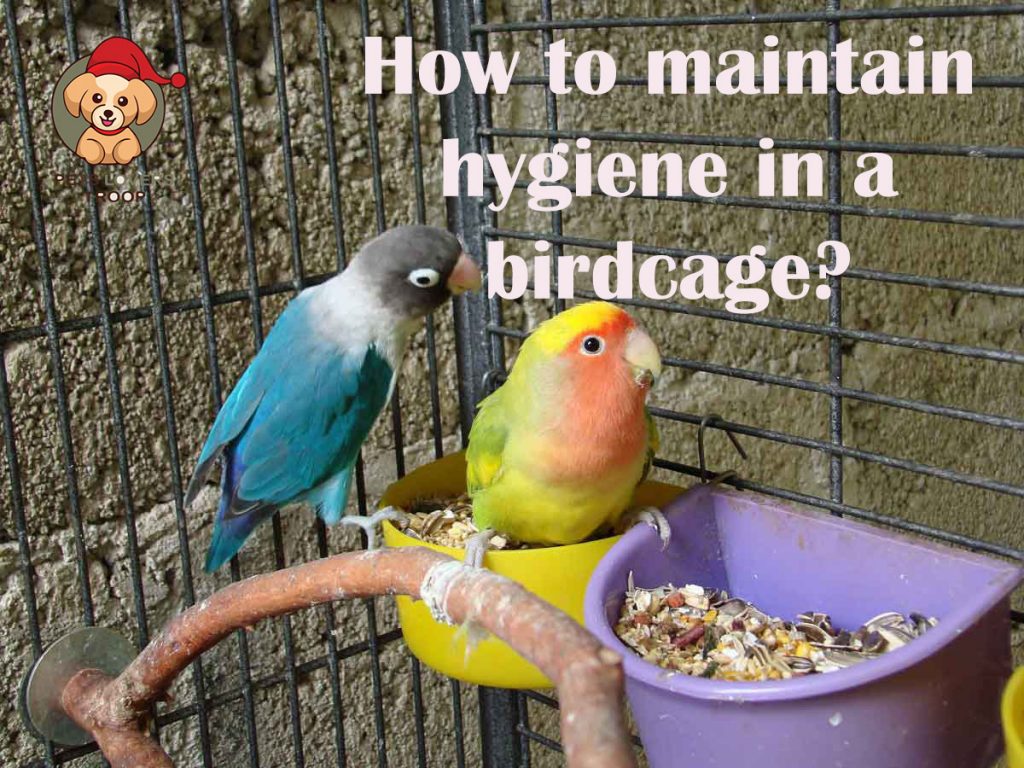
- Clean the cage and bird accessories at least once or twice a week. Toys made of rope, fabric or rawhide must be replaced every 2 to 6 months to ensure there are no loose strings to injure your bird’s wings or feet. Conduct a thorough cleaning session and remove uneaten food, droppings and dirty water. Also, wipe down the perches and bars.
- Cage liners should be changed regularly, as discarded foods and droppings can lead to an unpleasant stench.
- Clean bird food and water dishes daily. Wash them with a mild dish detergent to avoid the growth of bacteria or germs. Rinse and dry them before placing them in the cage.


